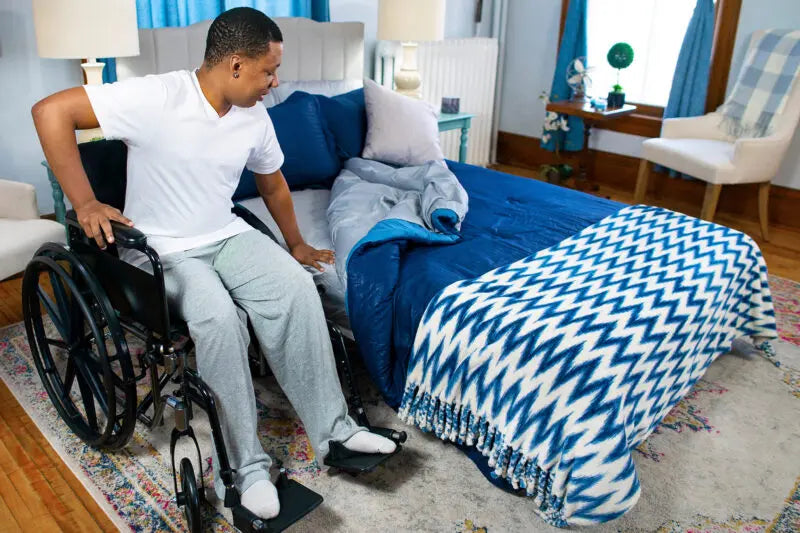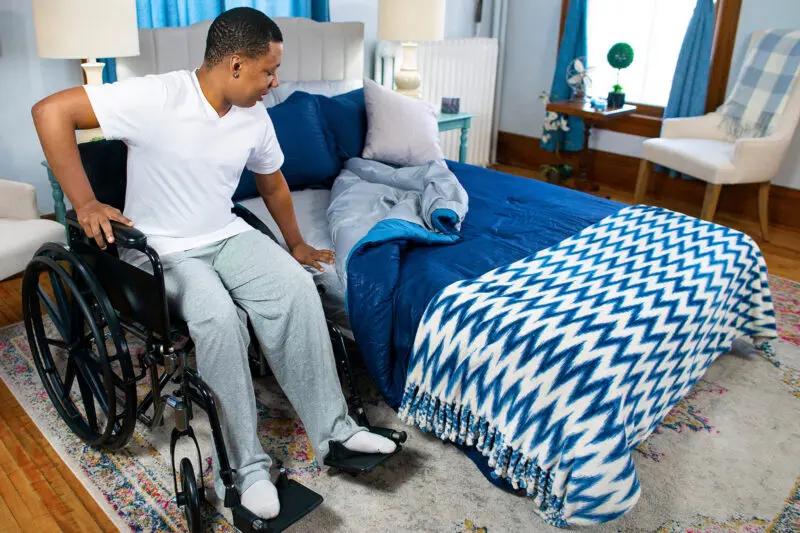
6 Essential Accessories for Your Home Care Hospital Bed to Improve Comfort and Mobility
Share
Creating a comfortable and efficient environment for someone requiring a home care hospital bed can be challenging. Ensuring both ease of mobility and maximum comfort is paramount. Here, we’ll explore some essential accessories that can make a significant difference in the daily life of those using a home care hospital bed.
1. Adjustable Bed Rails for Safety and Support
Bed rails are indispensable for ensuring safety by preventing falls and providing support when getting in and out of bed. Adjustable options can be tailored to the user’s needs, offering security and convenience. With adjustable bed rails, customization ensures that users can safely maneuver without feeling trapped, accommodating various physical needs and preferences. This flexibility is especially beneficial for individuals undergoing rehabilitation at home as it promotes independence while providing the necessary support.
One key advantage of bed rails is their ability to instill confidence in patients and caregivers alike. They play a critical role in safeguarding vulnerable individuals by mitigating the risk of nighttime falls or accidental rolling. Many models have padding for better comfort and rail locks for additional safety. Their multifunctionality means these bed rails can also serve as a steady aide when users adjust positions or transfer from bed to a mobility aid.
2. Pressure-Relieving Mattress Pads for Extra Comfort
Upgrade the standard mattress with a to reduce discomfort and bedsores. These pads offer cushioned support and are excellent for promoting restful sleep. They are particularly beneficial for patients who spend extended periods in bed as they help distribute body weight evenly, minimizing pressure on key areas that are prone to sores and ulcers. Options are available in various materials, such as memory foam or gel, so individuals can choose one that best suits their comfort needs and temperature preferences.
The benefits of these mattress pads extend beyond mere comfort. By reducing the risk of pressure ulcers, they significantly contribute to the health and well-being of bedridden patients. Their moisture-wicking properties help keep the skin dry, thereby reducing the chances of skin breakdown. For caregivers, these pads simplify routine bed maintenance, as many are designed to be easily cleaned and durable enough to withstand regular usage, enhancing the overall care environment.
3. Overbed Tables for Ease and Accessibility
An overbed table is a versatile accessory that provides a convenient surface for meals, reading, or hobbies. It allows easy access to essential items without leaving the bed, promoting comfort and independence. Modern overbed tables are often equipped with wheels for easy maneuverability and adjustable features to accommodate a variety of bed heights and positions. This level of adaptability enables users to comfortably engage in activities, whether it’s enjoying a meal or participating in a virtual family gathering.
The practical design of overbed tables makes them an indispensable part of any home care setup. They can serve as a mobile workstation or an entertainment center, decluttering the sleeping area and supporting a relaxed lifestyle. With options that include features like built-in cup holders or magazine racks, these tables combine functionality with convenience, allowing individuals to maintain a semblance of everyday normalcy without straining to reach distant items or surfaces.
4. Bedside Caddies for Organized Storage
Keeping essentials within reach can significantly improve day-to-day living. Bedside caddies allow for the organized storage of personal items like remote controls, phones, and books, reducing the need to get up frequently. By offering segmented pockets and compartments, these caddies help maintain an orderly space, making it simple to access necessary items quickly and effortlessly. bedside caddies.
The installation of bedside caddies is typically straightforward, with designs that attach easily to bed railings or hang over the side of a mattress. This simplicity makes them a user-friendly addition to any bedroom setup, allowing customization based on personal preference. In addition, these caddies can be rotated or repositioned as needed, ensuring adaptability to any changing requirements in the care environment, further supporting a person’s ability to live with independence and dignity.
5. Adjustable Backrests for Personalized Comfort
For those who spend extended periods in bed, adjustable backrests can provide crucial support for sitting up comfortably. This aids in numerous activities like eating, reading, or watching TV, facilitating easier breathing and better spine alignment. With various angles and heights, users can select the optimal position for their comfort and activity, turning the bed into a multi-purpose space that seamlessly adapts to their daily needs.
The role of adjustable backrests stretches beyond just providing physical support. They offer a psychological boost to users by fostering a greater sense of independence and self-sufficiency. Whether used independently or with caregiver assistance, these backrests are easy to adjust and lock into place, supporting a comfortable, ergonomic posture that can alleviate chronic pain and prevent further musculoskeletal issues. This versatility makes them essential in enhancing home care patients’ quality of life.
6. Mobility Aids for Seamless Transitions
Transfer boards or lift slings can significantly aid in moving between the bed and other areas in the home. These tools enhance safety and independence by making transitions smoother and less strenuous. Seamlessly integrating these mobility aids into the home environment allows users to navigate their living spaces more confidently. For instance, transfer boards help minimize physical exertion from bed to wheelchair, chair, or commode.
With a focus on safety, mobility aids are designed to reduce strain on the patient and caregiver. Products like lift slings can be particularly beneficial, providing secure handling during transfers and minimizing the risk of accidental drops or falls. Their lightweight design and easy-to-use mechanisms mean they can be deployed quickly, aiding in day-to-day transitions and enabling individuals to maintain an active presence in their home, moving with confidence and security from bed to other areas.

